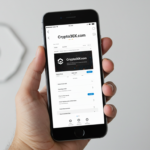Introduction
In the rapidly evolving world of digital technology, security breaches and leaks have become increasingly common. One such incident is associated with the term “thejavasea.me leaks aio-tlp.” This article will explore what this term refers to, its implications, and the steps individuals and organizations can take to protect themselves from such leaks.
What is “thejavasea.me leaks aio-tlp”?
The term “thejavasea.me leaks aio-tlp” refers to a specific leak associated with the website “thejavasea.me leaks aio-tlp.” This site appears to be linked to a breach or a leak involving a large quantity of data. The term “aio-tlp” typically stands for “All In One – Threat Level Protection,” which suggests that the leak might involve comprehensive data or a significant threat level.
The Impact of Data Leaks
Data “thejavasea.me leaks aio-tlp” can have severe consequences for both individuals and organizations. They often lead to:
- Identity Theft: Personal information such as Social Security numbers, credit card details, and addresses can be used fraudulently.
- Financial Loss: Financial data leaks can result in unauthorized transactions and financial losses.
- Reputational Damage: Organizations affected by “thejavasea.me leaks aio-tlp” may suffer from a loss of trust and damage to their reputation.
- Legal Repercussions: Organizations may face legal actions for failing to protect sensitive data.
Analyzing the Leak
1. Source of the Leak
Determining the origin of the “thejavasea.me leaks aio-tlp” is crucial. This involves understanding whether the leak was due to a cyber-attack, an insider threat, or a vulnerability in the website’s security. Investigating the source helps in implementing appropriate measures to prevent future breaches.
2. Type of Data Leaked
The nature of the leaked data can vary widely. It may include personal identification details, financial information, or corporate secrets. Understanding the type of data leaked helps in assessing the potential impact and the necessary response.
3. Scope of the Leak
The extent of the leak refers to how widespread the data breach is. A large-scale leak affecting millions of users will require a different response compared to a smaller, more contained breach.
Responding to a Leak
1. Immediate Actions
- Notify Affected Parties: Inform all individuals or organizations affected by the leak.
- Secure Systems: Implement immediate security measures to prevent further breaches.
- Assess Damage: Evaluate the extent of the damage caused by the leak.
2. Long-Term Measures
- Update Security Protocols: Enhance security measures and protocols to prevent future breaches.
- Conduct Training: Train employees and users on best practices for data protection.
- Legal and Compliance Actions: Ensure compliance with legal requirements and regulatory standards.
Protecting Yourself from Leaks
1. Use Strong Passwords
Create strong, unique passwords for different accounts. Avoid using easily guessable information and consider using a password manager.
2. Enable Two-Factor Authentication
Two-factor authentication adds an extra layer of security by requiring a second form of verification.
3. Monitor Your Accounts
Regularly check your financial and online accounts for any unusual activity.
4. Stay Informed
Keep up to date with the latest security threats and best practices for protecting your data.
Conclusion
The “thejavasea.me leaks aio-tlp” highlights the critical importance of data security in today’s digital age. Understanding the implications of such leaks and taking proactive measures to protect personal and organizational data is essential. By staying informed and implementing robust security practices, individuals and organizations can mitigate the risks associated with data breaches and leaks.
Read More: G15Tools.com: The Ultimate Resource for Essential Tools and Equipment
FAQs
Q1: What should I do if I suspect my data has been leaked?
A1: If you suspect your data has been leaked, immediately change your passwords, monitor your accounts for unusual activity, and consider contacting relevant authorities or organizations for further assistance.
Q2: How can I find out if my data is part of a data breach?
A2: You can use online tools and services that check if your data has been compromised. Additionally, organizations often notify affected individuals if their data is involved in a breach.
Q3: What are the common causes of data breaches?
A3: Common causes of data breaches include cyber-attacks, insider threats, poor security practices, and vulnerabilities in software.
Q4: How can organizations prevent data breaches?
A4: Organizations can prevent data breaches by implementing strong security measures, conducting regular security audits, providing employee training, and keeping software up to date.
Q5: Are there legal requirements for handling data breaches?
A5: Yes, organizations are often required by law to report data breaches to authorities and affected individuals. Regulations vary by country and industry.
Q6: What should be included in a data breach response plan?
A6: A data breach response plan should include procedures for notifying affected parties, securing systems, assessing damage, and taking corrective actions to prevent future breaches.







